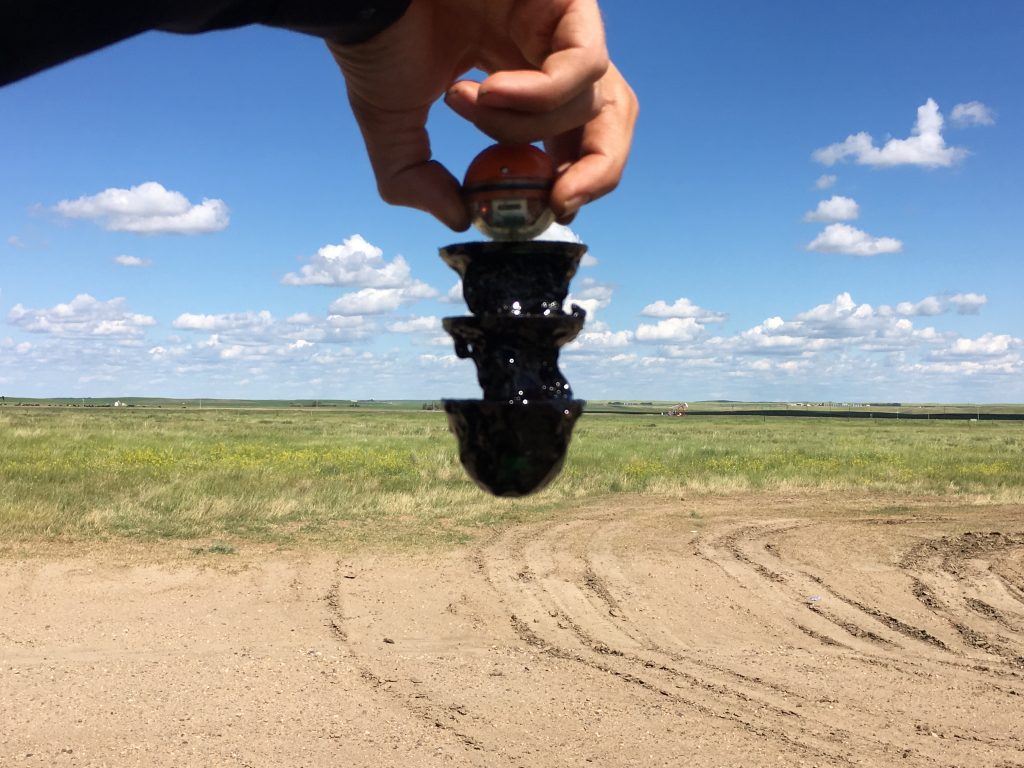 INGU Solution’s golf ball-sized technology for cheaper and easier pipeline screening scores a commercial hole-in-one.
INGU Solution’s golf ball-sized technology for cheaper and easier pipeline screening scores a commercial hole-in-one.
Since its selection as a top choice by Chevron Technology Ventures’ CTV Catalyst Program in 2017, INGU Solutions has captured a flood of media attention and pipeline industry interest for its miniature pipeline screening technology. That momentum has now translated into early commercial success.
“Business is amazing,” says Yvonne van den Berg, INGU Solutions’ chief commercial officer and cofounder. “In November 2017, we received CSA certification for our Pipers and, as of that moment, we were able to go into operational pipelines…. We expect to close the year with over 30 pipelines. Our progress has totally exceeded our expectations.”
Miniaturization
The invention of inline inspection (ILI) tools in the 1960s, and later commercialization, brought an important advance in the safety and integrity of oil and gas pipelines. But not all pipelines. ILI tools—or “smart pigs,” to use industry jargon—are typically deployed on large, consistent-diameter pipelines, which leaves an estimated 40 per cent of the world’s pipeline infrastructure unmonitored.
That 40 per cent represents about 1.5 million km of smaller-diameter pipelines, which pose a big risk for the pipeline industry but also a big opportunity for INGU Solutions.
INGU developed an affordable miniaturized technology for pipeline leak detection, geometric defects and deposits that threaten pipeline performance and safety.
Pipers are golf-ball-sized sensors that combine advanced sensing technology with state of the art computing power into a cost-effective inline screening technology.
Pipers can be deployed with the flow of product in pipelines or attached to a cleaning pig. Beyond the obvious advantage of being able to inspect pipelines as small as 2 inches in diameter, these inline sensors require zero downtime and operators don’t need to turn over the pipeline to INGU.
Lower costs save operators money but also allow more scans of the infrastructure. The first run provides a baseline. Subsequent runs provide more accurate information and a higher resolution picture of the state of the pipeline over time.
INGU’s business model makes it a data analytics company rather than a hardware company. Pipers aren’t sold but given to operators. INGU solely charges for the data analysis, i.e. the answers provided to the operators’ questions.
Commerciality
The pipeline industry in Canada has been working towards an ambitious goal of zero incidents for years now. Each pipeline spill or leak challenges the reputation of pipelines as the safest mode for transporting hydrocarbons. Incidents also harm the oil and gas industry prospects for getting its products to market and threaten the industry’s social license to operate.
That in just two years INGU Solutions has moved from being a startup with a cool technology to paid pilot projects with Chevron and other companies to full commercial engagement is testament to the industry’s appetite for continually improving pipeline safety and integrity while driving down the overall costs of operating pipelines.
INGU’s first live pipeline run was in February of this year with Crescent Point Energy. “Our very first operational pipeline was a sour gas line,” van dan Berg says. “In gas lines, we run using our Pipers attached to a cleaning pig. We use this deployment method also for liquid lines, depending on the information the customer is looking for,” van dan Berg says.
To date, INGU has inspected a total of 23 operational pipelines, covering 134 km. These lines consisted of varying diameters and materials: steel, HDPE, FlexSteel, fiberspar. Screening wasn’t limited to oil but also gas, produced water, oil emulsion and fresh water.
The road ahead
INGU’s technology isn’t competing with bigger, more expensive ILI tools, which provide a wealth information and accuracy about everything from micro cracks to the state of a pipeline’s cathodic protection and coating. But these capabilities are the outcome of decades of continual technological development. Similarly, the capabilities of Pipers will continue to expand, INGU says.
But even now, Pipers’ versatility and capabilities are impressive start. INGU is working with more than a dozen industry-leading customers in Canada and the US, and that number continues to grow.
INGU also stands to become another Canadian oil and gas export success story, as it fields requests from all over the world on a daily basis.
“The next challenge is the transition from early stage to growth. For that we’ll have to outsource manufacturing, develop our analysis into an AI platform, and accelerate our sales. We’re currently a team of nine people, and we’re looking to add a couple of more team members next year,” van den Berg says.
GridStone is fiercely focused on growing your business through branding and communications. www.gridstone.
GridStone was created because we believe that technology and innovation challenge the status quo leading to technical breakthroughs and impactful ideas that change the world around us.
As a business growth firm focused on revenue generation, we look for ways to increase the money your business is making while staying true to your innovative focus and direction. Our goal is to help you grow your business in a way that is sustainable and that ultimately differentiates your business from your competitors over the long term.
Share This:





 CDN NEWS |
CDN NEWS |  US NEWS
US NEWS 
































